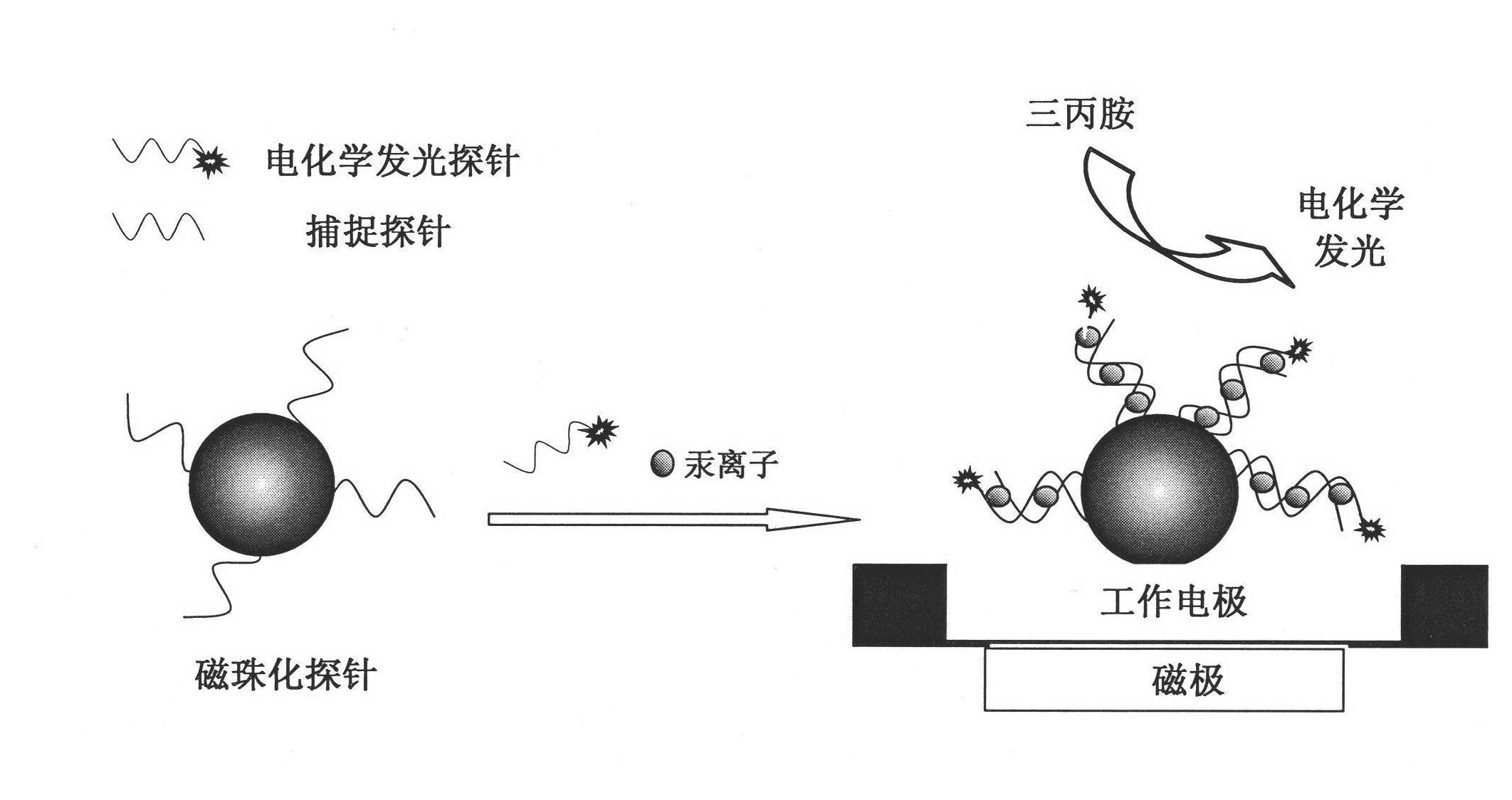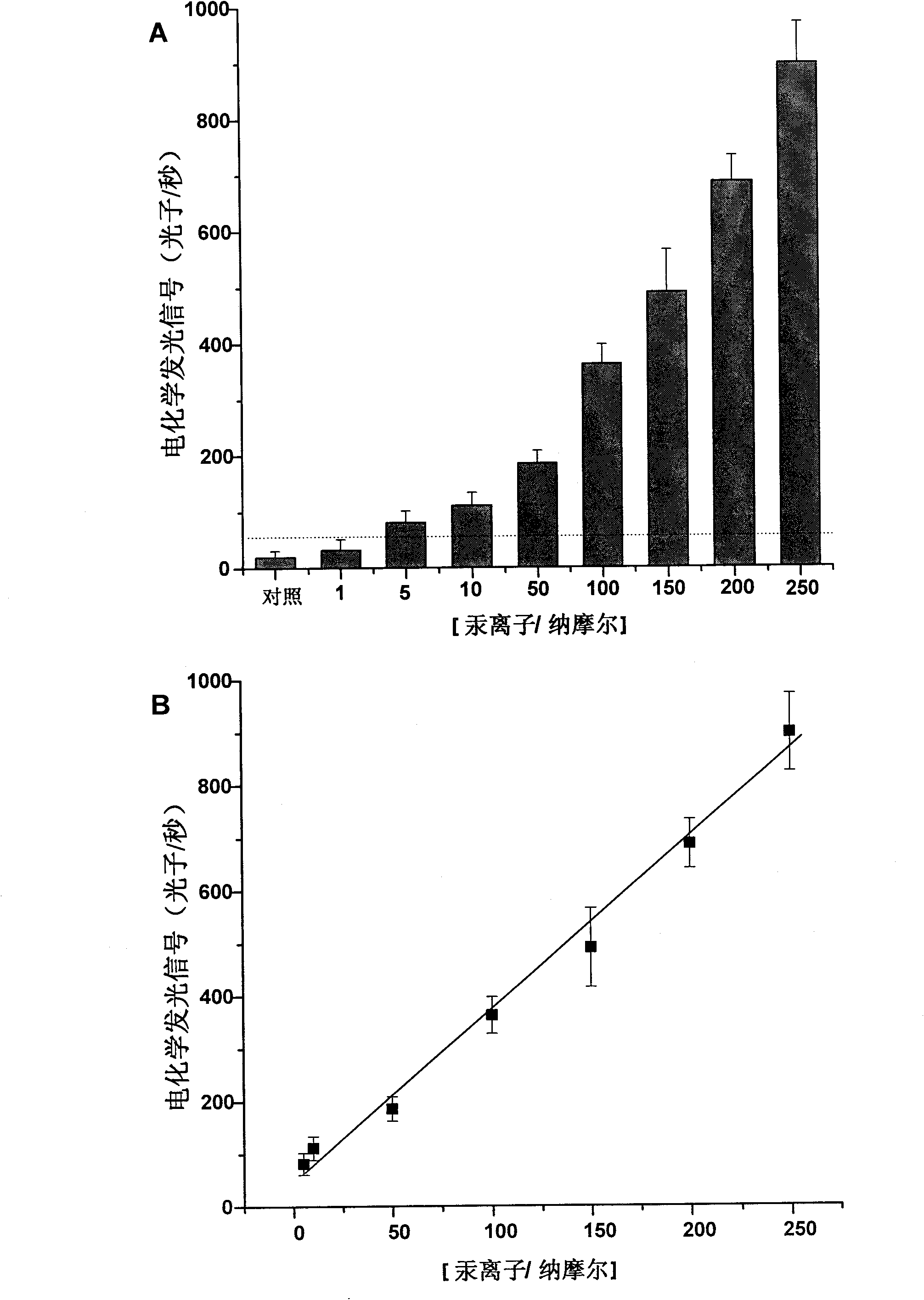Magnetic bead electrochemiluminescence gene sensor-based method for detecting mercury ions and application thereof
A luminescent gene and electrochemical technology, applied in the field of environmental pollutant detection, achieves high accuracy, improved sensitivity, and good specificity
- Summary
- Abstract
- Description
- Claims
- Application Information
AI Technical Summary
Problems solved by technology
Method used
Image
Examples
Embodiment 1
[0047] The method of the invention is applied to mercury ion detection.
[0048] (1) Design two DNA probe sequences, as shown in Table 1, synthesized by Shanghai Sangon Bioengineering Technology Co., Ltd.
[0049] Table 1 DNA probe sequence
[0050]
[0051] (2) A. Preparation of magnetic beaded DNA capture probe 1: Take 100 μl carboxy-modified magnetic beads (particle size 2.8 μm, concentration 10 mg / ml) (Affimag PSC from Tianjin Beisile Company), and use 200 μl imidazole buffer (concentration 100mM, pH 7.0) was washed three times; 500 μl of imidazole buffer (concentration 100 mM, pH 7.0, containing 30 mM carbodiimide hydrochloride (EDC)) was added to the washed magnetic beads, shaken at 300 rpm for 30 minutes, Make the carboxyl group react with EDC to activate the carboxyl group; wash the activated magnetic beads three times with 200 μl imidazole buffer (concentration 100 mM, pH 7.0), and then add 100 μL 500 nM DNA capture probe 1 (as shown in Table 1) , shake at 300 rp...
PUM
 Login to View More
Login to View More Abstract
Description
Claims
Application Information
 Login to View More
Login to View More - R&D
- Intellectual Property
- Life Sciences
- Materials
- Tech Scout
- Unparalleled Data Quality
- Higher Quality Content
- 60% Fewer Hallucinations
Browse by: Latest US Patents, China's latest patents, Technical Efficacy Thesaurus, Application Domain, Technology Topic, Popular Technical Reports.
© 2025 PatSnap. All rights reserved.Legal|Privacy policy|Modern Slavery Act Transparency Statement|Sitemap|About US| Contact US: help@patsnap.com



